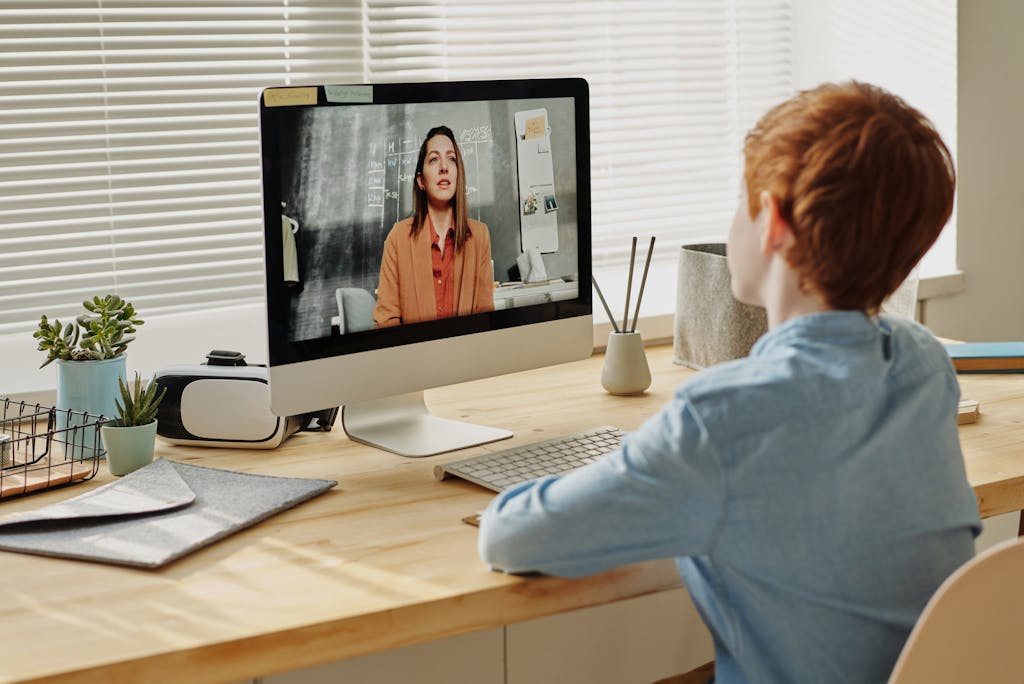Introduction:
In today’s rapidly evolving educational landscape, maximizing learning opportunities has become more crucial than ever. One of the most innovative approaches to enhancing learning experiences is implementing the Student Learning Space (SLS).
This dynamic platform offers students a versatile digital environment to engage with educational content, collaborate with peers, and explore personalized learning pathways.
This guide will delve into the various strategies and techniques for making the most of the SLS, empowering both students and educators to optimize their learning journey.

Understanding the Student Learning Space:
The Student Learning Space, often called SLS, is a multifaceted digital platform that supports teaching and learning activities.
Developed to cater to the diverse needs of learners, the SLS integrates a wide range of tools and resources, including interactive modules, multimedia content, and collaborative features.
Accessible anytime, anywhere, the SLS offers students the flexibility to engage with educational materials at their own pace and convenience. With its user-friendly interface and customizable functionalities, the SLS fosters a dynamic learning environment that promotes active participation and knowledge acquisition.
Key Features of the Student Learning Space:
1. Interactive Learning Modules:
The SLS offers a rich repository of interactive learning modules covering various subjects and topics. These modules utilize multimedia elements such as videos, animations, and simulations to enhance comprehension and retention. By providing immersive learning experiences, these modules cater to diverse learning styles and promote deeper engagement with the content.
2. Personalized Learning Pathways:
One of the SLS’s defining features is its ability to tailor learning experiences to individual students’ needs and preferences.
Through adaptive algorithms and data analytics, the platform generates personalized learning pathways that cater to each student’s strengths, weaknesses, and learning goals.
The SLS helps students learn better by giving them specific suggestions and tests that change based on their performance. This lets students learn at their speed and take charge of their learning.
3. Collaborative Tools:
Collaboration is an integral aspect of modern education, and the SLS provides various collaborative tools to facilitate peer interaction and knowledge sharing.
From discussion forums and group projects to real-time messaging and video conferencing, the platform enables students to collaborate effectively with their peers within and beyond the classroom.
The SLS encourages students to work together, which helps them learn important skills like communication, teamwork, and solving problems—skills they’ll need in the modern world.
4. Assessment and Feedback Mechanisms:
Assessing student progress and providing timely feedback are essential to effective teaching and learning. The SLS makes it easier to test students by offering many different ways to do it, like quizzes, assignments, and polls.
Moreover, the platform leverages advanced analytics to track student performance and identify areas for improvement. The SLS empowers students to monitor their progress and make informed learning decisions by providing actionable feedback and performance insights.
Strategies for Maximizing Learning with the SLS:
1. Set Clear Learning Objectives:
Before diving into the SLS, it’s essential to establish clear learning objectives and goals. Whether you’re a student or an educator, articulate what you aim to achieve through your interaction with the platform.
By aligning your activities with specific learning outcomes, you can leverage the full potential of the SLS to enhance your knowledge and skills.
2. Explore Diverse Content:
The SLS offers various educational content spanning various subjects, topics, and formats. Take advantage of this diversity by exploring different types of content, from text-based articles to interactive simulations.
Experiment with multimedia resources to find the best formats for your learning preferences and objectives.
3. Engage Actively with Interactive Modules:
Interactive learning modules promote active engagement and critical thinking. Instead of passively consuming content, interact with the modules by answering questions, solving problems, and exploring interactive elements.
Getting involved with your learning helps you understand it better and get what it’s all about.
4. Utilize Personalized Learning Features:
Use the SLS’s special features to make your learning fit you better. Take advantage of adaptive assessments and personalized recommendations to focus on areas for improvement.
Customizing your learning pathway allows you to optimize your time and efforts for maximum effectiveness.
5. Collaborate with Peers:
Learning is inherently social, and collaboration plays a crucial role in learning. On the SLS, you can work with your classmates using special tools.
You can share ideas, discuss your learning, and do things together like group projects or reviewing each other’s work. This helps you understand better and learn how to work with others, which is super important.
6. Seek Feedback and Reflect on Progress:
Actively seek feedback from peers and instructors to gauge your progress and identify areas for growth. Take advantage of the assessment and feedback mechanisms within the SLS to monitor your performance and track your learning journey. Reflect on your achievements and challenges to refine your approach and continuously improve.
Conclusion:
The Student Learning Space represents a transformative approach to education, empowering students and educators to maximize learning opportunities in a dynamic digital environment.
Individuals can optimize their learning journey and achieve educational goals by leveraging its interactive features, personalized learning pathways, and collaborative tools.
Whether you’re a student who wants to deepen your understanding of a subject or an educator striving to enhance teaching effectiveness, the SLS offers a wealth of resources and strategies to support your learning endeavours.
Follow the advice in this guide to make the most of the Student Learning Space. With it, you can keep learning and growing your whole life.
FAQs
1. How do I get to the Student Learning Space?
You usually go to the Student Learning Space through a website or an app that your school gives you. They’ll give you a username and password to log in. Then, you can explore everything the Student Learning Space offers.
2. Does the stuff on the Student Learning Space match what I’m learning in class?
Yep, usually everything on there contradicts what you’re studying in school. Teachers and people who make the curriculum ensure the stuff on the Student Learning Space matches what you’re supposed to be learning.
3. How does the Student Learning Space know how to help me learn better?
It kind of watches what you’re doing and how well you’re doing it. Then, it gives you things to learn that match how you like to learn and what you need to work on. It’s like it’s custom-made just for you!
4. Can I work with my friends on the Student Learning Space?
Absolutely! You can chat with your friends, work on projects together, and even do activities as a group. The Student Learning Space has tools to help you collaborate with classmates and make learning fun.
5. How do I know if I’m doing well on the Student Learning Space?
The Student Learning Space has tests and quizzes to check your progress. It also gives you feedback, which is like advice on how to get better. So you can see what you’re good at and what you need to practice more. It’s all about helping you learn and improve!






